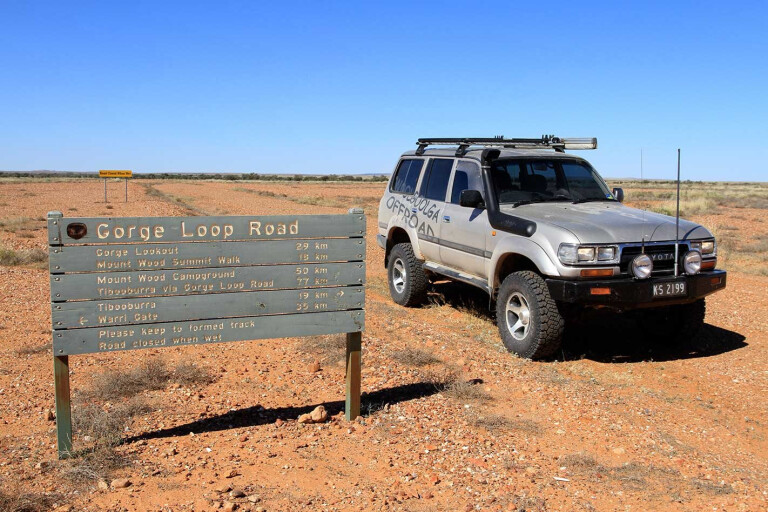
THERE AREN’T too many nationals parks where you can spend days exploring, camping and understanding the hardships our early explorers endured. Tucked right up in the north-west of New South Wales is Sturt National Park.
Within its 350,000 hectares lies floodplains, desert, jump-up country, gorges, an abundance of history and much more for those willing to explore. The park has significant Aboriginal sites that date back 20,000 years, as well as pastoralism for well over 100 years.
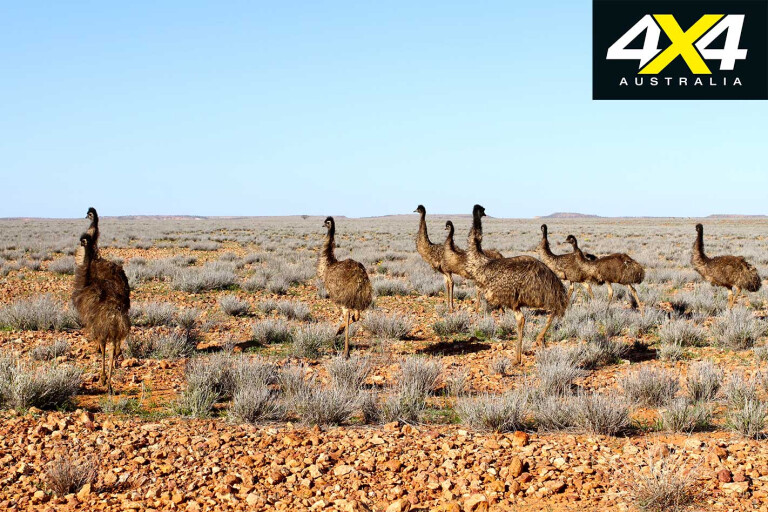
Tibooburra, 340km north of Broken Hill, is a great place to prepare for the trip. In town you can get basic supplies including fuel, groceries and advice for exploring the Sturt. In fact, many people only call in at Tibooburra for an overnight stay when heading farther west.
One of our favourite drives starts 24km east of Tibooburra, where you can explore shearing sheds with quarters, a fascinating pastoral museum, and then drive the Gorge Loop Road. Signposted as Mount Wood Station, this is a step back in time; there are boilers, wool scourers, a water-drawing whim, engines, steam gear and heaps more.
Locals and the National Parks and Wildlife Service (NPWS) has done a great job of preserving the history and equipment. Just across the creek via a suspension bridge is Mount Wood Station, which is open to the public and still holds the smells and sights of days gone by.
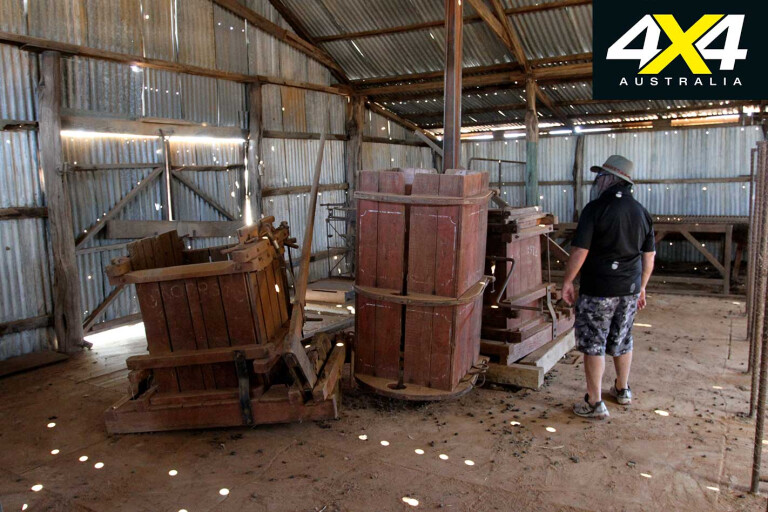
Another highlight is the Gorge Loop Drive, starting from Mount Wood Station. Most people don’t associate this area with gorges, but along the 100km loop there are several which are made even more spectacular following rainfall, where you can see the old river gums lining the banks of the creeks soaking up any water that flows through this barren landscape.
The drive takes you across desolate gibber rock plains, along ridge lines and through several creek crossings; when these low areas are in flood you can see debris high up in the trees. The undulating terrain rises and falls around 200 metres, which doesn’t sound like much, but the weathering effect can be dramatic considering just how flat this landscape is.

A lookout at about the halfway point provides views across the plains to the horizon, where you can see the effects of how the water has cut a line through the landscape. It’s highly noticeable, as you can trace the old gums growing beside the water source. The landscape changes from white granite to a reddish colour and then to the typical red gibber rock covered with scattered vegetation.
A further 80km along the track stands the remains of Horton Park Station, an outpost set up as a remote camp away from the main station of Mount Wood. Take some time to wander around and discover the remnants of the yards, water rows, fence lines and old bottles. The old house still stands, and one can only imagine the hardships these folk would have endured (the millions of flies, the remoteness…)
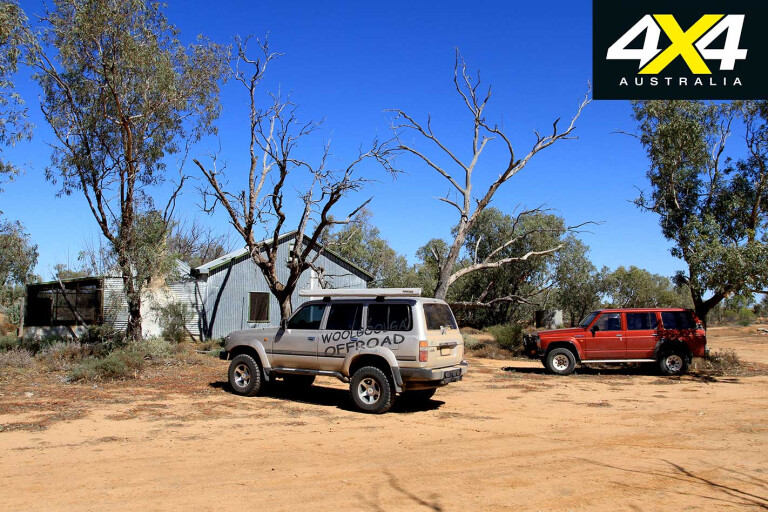
Before too long you will near the end of the loop drive and pop out on the main road back to Tibooburra. After turning left toward town keep an eye out for Sunset Lookout about 2km north of the town on the eastern side of the road, another spot where you can get some great shots and witness how remote this place is. This 100-metre high rocky outcrop is worth the scramble to the top.
While not a hard drive by any standards, the Gorge Loop Drive normally takes around three to four hours to complete if exploring all of the points of interest along the way. This is a remote area and, while you’re not far from Tibooburra, there’s no phone service, very little traffic and no services along the way. Road conditions can vary, but generally expect rough conditions; so tyre pressures for a softer and safer ride.
Charles Sturt
The national park is named after explorer Charles Sturt, who pushed his way through the area in 1845 looking for an inland sea. At Tibooburra, a replica whale boat Sturt and his men dragged on their travels is mounted in the town’s park, alongside other historical gear highlighting how machinery has advanced over the years.
Travel Planner
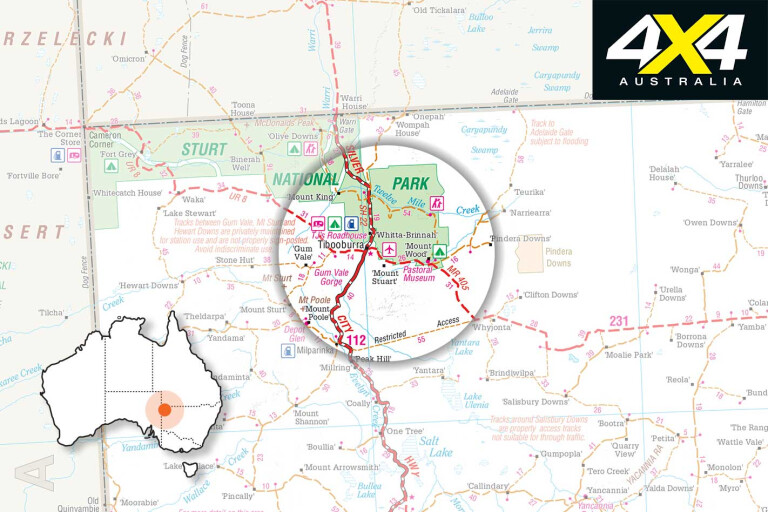
WHERE
THE GORGE Loop Drive starts 25km to the east of Tibooburra in Sturt National Park. The loop drive is 100km long and covers a diverse range of landscapes with several lookouts and points of interest along the way.
CAMPING
Camping is permitted at the Mount Wood Campground, where there are toilets, shelter and free gas barbecues. Fires are permitted but you must bring your own wood and have them in the designated areas. There are several caravan parks in Tibooburra with all the facilities that offer reasonable rates.
SUPPLIES AND FACILITIES
Apart from toilets at the Mount Wood Campground, there are no facilities on the Gorge Loop Drive. You need to be totally self-sufficient, as traffic in this area is irregular and there is no phone service. This is a remote park where you need water, food and spares in case of a breakdown. Tibooburra isn’t far away, but only offers minimal services at any time. There are two great pubs in town.
TRIP STANDARD
A 4x4 is recommended for access to the park and its surrounding places of interest. The roads within the park range from sandy, well-used tracks through to rocky sections at the many creek crossings. After times of flood, be aware of washouts and corrugations. Lowering your tyre pressures is essential.
MAPS AND FURTHER INFORMATION
Hema’s Outback NSW covers this area. Any good-mapping GPS will show the Gorge Loop Road and other details. Detailed information can be found at either the Tibooburra National Parks office at Tibooburra, by phone on (08) 8091 3308 08, or on their website: www.environment.nsw.gov.au/NationalParks/
BUDGET ATTRACTIONS
Even though the drive may only take several hours, this is a great way to spend the entire day exploring what hides within this park. You can visit the pastoral museum, walk in and around the now-disused Mount Woods shearing shed, cross the suspension bridge and explore several outstations. There’s bird watching or take a trek to the top of Mount Wood Lookout. This is one drive where you wonder just how the pioneers survived out here.

COMMENTS